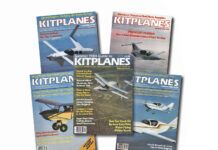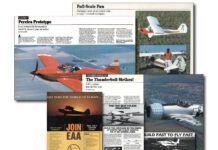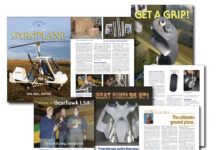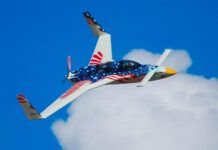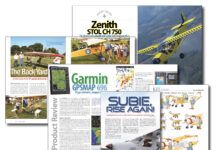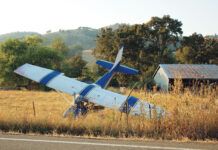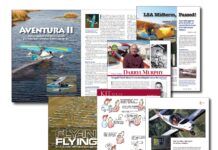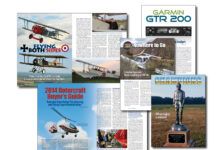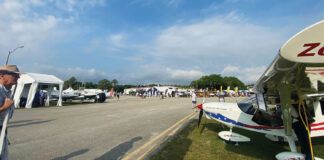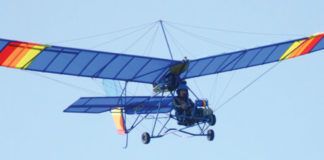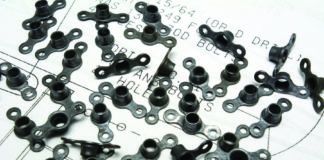By Paul Dye
About four or five years ago, I received a phone call from the editor of KITPLANES®, Marc Cook, asking if I would be interested in writing for the magazine. Apparently, he had seen postings I had made in various online forums and thought I had something useful to say to the Experimental community in general and also the ability to string a few words together in a coherent sentence. Not that sure about the second part, but interested in the first, I agreed—and had no idea that it would eventually lead to me becoming editor in chief of the magazine.
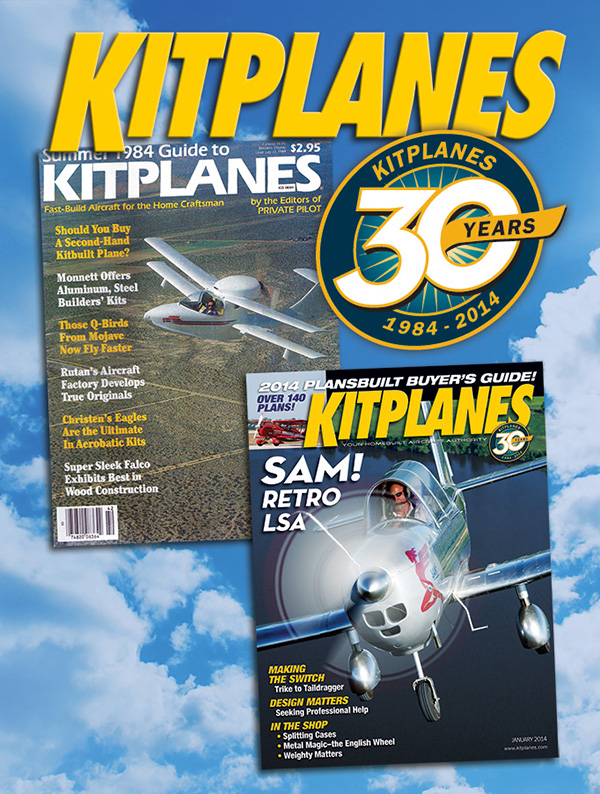
To be completely honest, the first thing I had to do after Marc and I hung up was to go out and buy a copy of KITPLANES®. Although I had been involved in many forms of aviation my entire life, and had been into the homebuilt world for close to a decade, I had never read KITPLANES®. I was aware of it, but had my hands (and desktop) full just trying to read the other magazines I already received—and keeping up with the growing presence of Experimental forums on the Internet. Picking up a copy at the local newsstand, I realized that here was a magazine that was targeted directly at a specific audience—those who build and fly Experimental aircraft.
KITPLANES® was not filled with stories that applied to all forms of aviation, and that was fine with me; I had other magazines for that. What I found in these pages was a distinct focus that I still use today when talking with authors—each article should have something uniquely for the homebuilder in order for it to make the cut. For instance, an article on a pilot lost in bad weather is great for a generic GA magazine. One where he is having trouble because his experimental fuel system is limiting his horsepower—now that’s for us!
When I agreed to lead the magazine after having been a columnist for a few years, I told the publishers that I had essentially no experience in putting out a magazine. (Fortunately, the rest of the staff does!) What I did have is the perspective of our target reader: pilots and builders who want to learn more about how to do more with—and to—their Experimental aircraft. I look at every issue’s mix of articles so that we provide a variety for readers from all parts of the spectrum—from those looking to choose their first Experimental project, to those planning an upgrade, and even those who want to build their own electric system—starting by pulling the wire from raw copper ore. There is no way we’ll please everyone with every article, or even every issue, but we’ll do the best we can to please as many of our readers as we can.
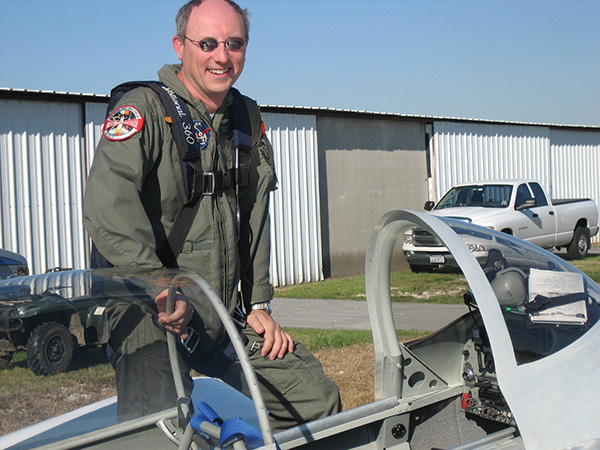
Thirty years is a long time, a generation in fact. Thirty years ago, an aircraft kit was a new concept; before that, building a plane meant scrounging plans, or at least a design concept, and a bunch of parts from a variety of suppliers to come up with something that you could fly—hopefully for more hours than you would spend fixing it. Today’s kits are modern marvels, producing reliable aircraft that can do amazing things. KITPLANES® has grown up along with the current crop of kit manufacturers, and it is our goal to keep our readers up to date in the fast-changing world.
In my short tenure on the job, I have enjoyed meeting builders at shows, fly-ins, and on random airport ramps as I stop for fuel. There are a lot of genuinely nice people in the Experimental community, and quite a few legends as well. We have worked hard to bring a few of these legends—quiet and otherwise—to these pages to share their knowledge and expertise with a broader audience than they have available in their local area. Guys like Dan Horton and Bob Nuckolls have years of expertise and name recognition, and we are happy to provide them a monthly venue for their ideas and lessons. Lesser-known, but just as talented, writers like Bob Hadley (our new Home Shop Machinist) bring their own expertise to bear on the problems facing those who need to build their own parts.
KITPLANES® was founded to fill a need. Experimental aviation was coming out of the broken-down hangars and tiny garages where people built low and slow airplanes powered by whatever they could find. As it gained momentum, homebuilding was coming of age with faster designs with longer range and more capability. It was time for a new magazine—one dedicated to this new and expanding movement, one with the size and scope to show the world that Experimental aviation had a large following and was here to stay. Through all of its 30 years, KITPLANES® has tried to stay on top of this ever-expanding and creative world and has succeeded in spreading information and stories of success across the community.
The editors who have gone before me were outstanding in their ability to keep this magazine on focus and relevant to the Experimental market. I’ve asked a couple of them—along with our advertising manager, Chuck Preston, who has been with the magazine since 1990—to share some of their thoughts and memories of the magazine through the years. Dave Martin was one of the founding fathers of KITPLANES® and shaped it for many years. Marc Cook served in the leadership role as editor in chief and then editor at large for many years.
Their look back helps us to look forward as we plan for the next 30 years of providing unique, focused coverage of the homebuilt aircraft world for our readers.
In the Beginning…
KITPLANES® joined the aviation magazine fray in 1984 and looked back only a few times.
By Dave Martin
In the fall of 1983, as plans moved forward for rolling out the first issue of KITPLANES®, Dennis Shattuck, soon to be the editor, knew he had a problem. He needed more help for his two new projects, KITPLANES® and Ultralight Planes. He was already editing Private Pilot and Aero, a controlled-circulation magazine for the owners of four-seat and larger light planes.
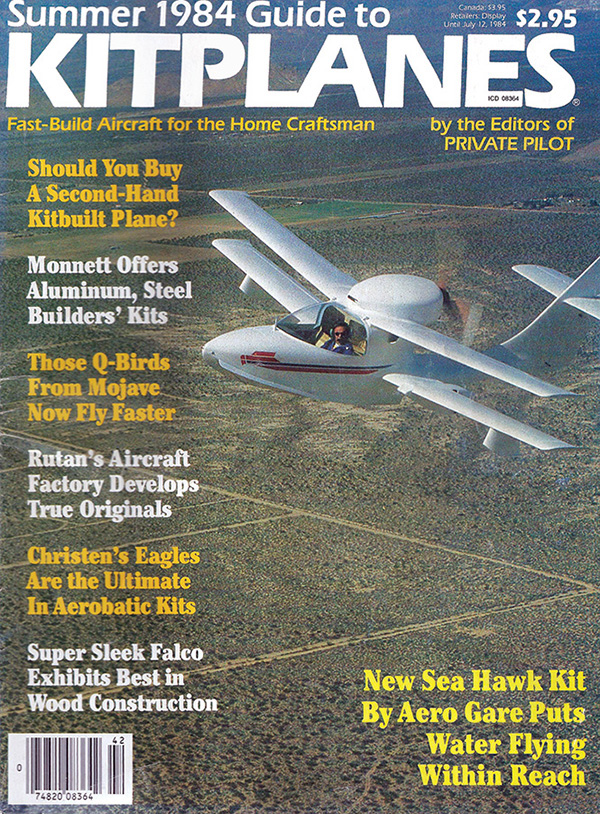
How It Started
Shattuck and his boss, Fancy Publications owner Norman Ridker, both private pilots, followed the ultralight craze of the early ’80s and the greatly increasing number of kits in the homebuilt field. Their decision was to proceed with the two new magazines, but Shattuck’s staff was limited to a cadre of freelance writers and one in-house copy editor. No one in the crew was a homebuilder, and none of them flew ultralights. Veteran writer Don Downie and longtime photographer/writer Howard Levy, however, moved some of their efforts from Private Pilot to help considerably with KITPLANES®.
It turned out that I was a partial answer to Shattuck’s problem. While still in the Navy, I began writing aviation articles. After retiring in late ’82, I wrote numerous ultralight reviews and related features that were published in several of the increasingly numerous ultralight magazines. Shattuck read my work in several of them and urged me to become a full-time staff writer for his new stable of four aviation magazines, and he let me do it from home in San Diego. I traveled a lot for stories and turned in up to eight articles per month. Most were pilot reviews on airplanes and ultralights, plus an occasional gyroplane and a high-performance sailplane.
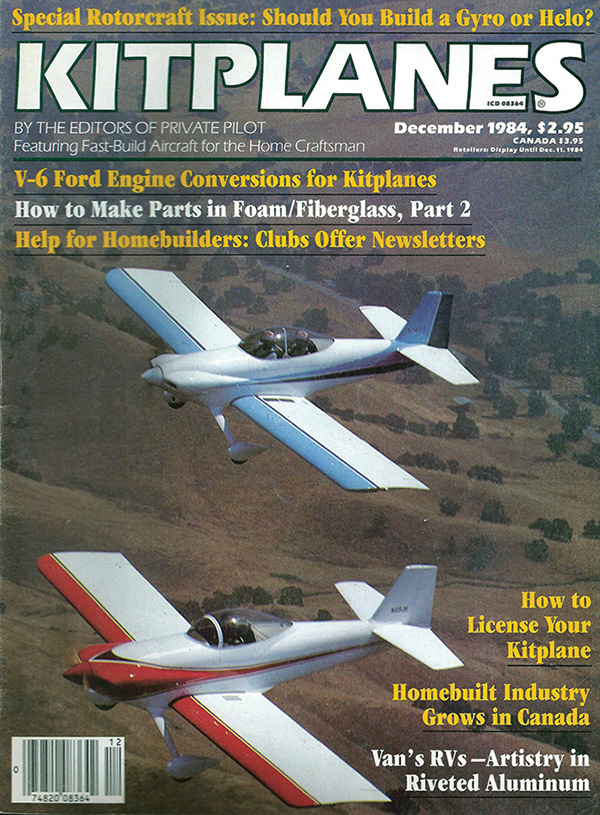
The first issue of the new homebuilders’ magazine was titled Summer 1984 Guide to KITPLANES® by the Editors of Private Pilot. Scheduled initially for newsstand sale only, its reception there would determine whether to convert to a periodical. Ready for the presses shortly before I began work, the first KITPLANES® main feature was a directory of kit manufacturers and their products, including specs and prices. The directory listed 64 companies offering 76 kits and 13 plans-only projects. Canadian Garry LeGare’s Seahawk amphibian was the cover story.
A major article featured Burt Rutan’s Long-EZ, Defiant twin, and Solitaire canard sailplane. These were plans projects, not kits. Other stories detailed eight somewhat different kits from Monnett Experimental Aircraft (now Sonex Aircraft LLC), a Christen Eagle (recognized as the first modern, complete kit), the side-by-side canard Dragonfly, the in-development all-wood Italian-design Sequoia F.8L Falco, and others. Also in that first issue was work from several cartoonists including Robrucha. By the third issue and from then until now, his cartoons have been featured on the last page and are titled “KitStuff.” Robrucha is the one contributor who has been published in every KITPLANES® issue. His book, “Out of the Basement,” featuring 209 of his aviation cartoons (most of them from KITPLANES® and in color), was published in 2013.
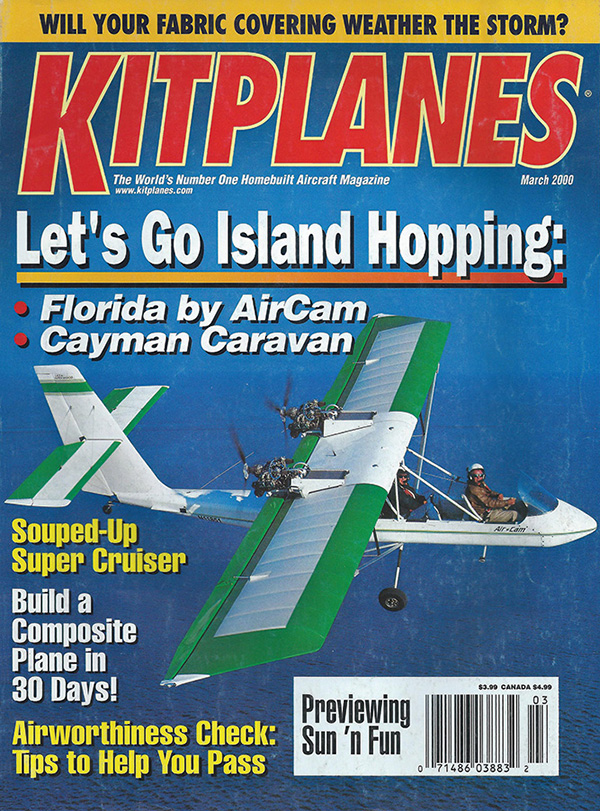
Moving Up
In the third issue—the November/December ’84 edition—the commitment to publish monthly was announced. EAA Oshkosh ’84 (long before the name was changed to AirVenture) was described, but in his editorial, Dennis Shattuck noted that KITPLANES® would feature stories from Oshkosh for months to come. Don Downie’s lengthy piece on Dick VanGrunsven’s early designs (the RV-3 and RV-4) hinted at many more RVs in the future. He noted seeing a line of 19 RV-3s and -4s at a Woodlake, California, fly-in. The issue also contained a directory of eight companies offering kit gyroplanes and helicopters. Two of the companies remain today: RotorWay helicopters and Sport Copter gyroplanes (evolved from Chuck Vanek’s gyros).
A special feature in the February ’85 issue was a directory of replica warbirds. Of the 24 planes noted, about half were plans-only projects. They ranged from a Rotax-powered Fokker Eindecker ultralight, to various P-51 replicas expected to fly faster than 200 mph. We sampled one of the low-end ultralights, a Squadron Aviation (Columbus, Ohio) S.E.5a look-something-alike. Powered by a 35-hp Cuyuna two-stroke engine, a 3:1 speed reduction unit, and a 72-inch wood propeller, it flew quite well. Roll control was via differential spoilers instead of ailerons. The company also produced a Fokker D-VII and a Spad XIII ultralight.
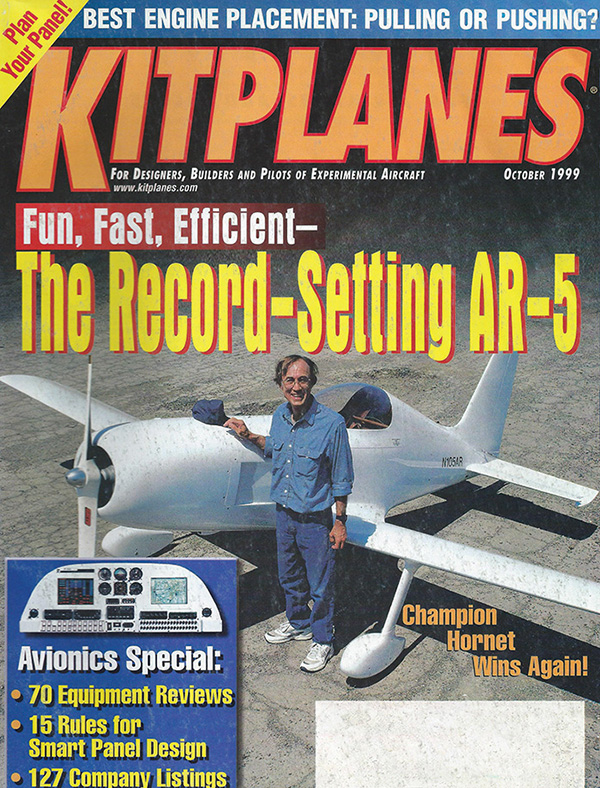
My first cover story, on Dan Denney’s prototype Kitfox, was in the March ’85 edition. The following year at Sun ‘n Fun in Florida, Denney brought the Kitfox and a pair of inflatable Full Lotus floats. We installed them at nearby Lake Parker. After a bit of dual, he invited me to splash solo, pointing out that I should land near shore because the floating logs in the lake were not logs. I should plan on no swimming.
Denney and Avid Flyer designer Dean Wilson had worked together on the popular Avids, but they had a falling out. Both capitalized on nostalgia for tube-and-fabric taildraggers. For a while during the early ’90s, the rival companies (under new ownership and 15 miles apart in Idaho) had sales of 40 to more than 50 kits each month. For several years, KITPLANES® reporters flew and wrote a lot about these variations on a theme.
Starting about the time Ultralight Planes appeared on newsstands in mid ’84, the ultralight market essentially collapsed, probably due to market saturation and a totally unfair exposé on ABC’s “20-20” program. As ultralight companies were going out of business instead of paying their Ultralight Planes ad bills, Ridker shut it down, thereby becoming the last of seven ultralight magazines to start and the first to stop. Most others followed.
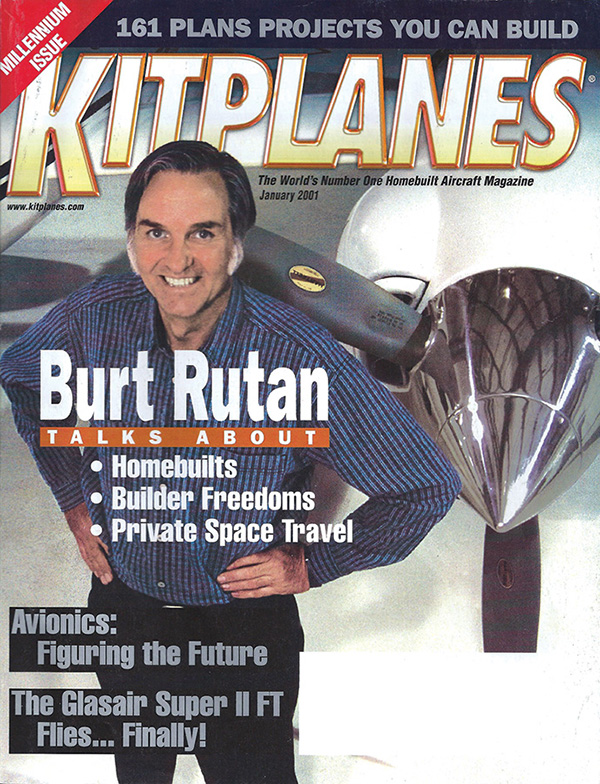
Staffing Up
My primary efforts were redirected to KITPLANES®. I was shifted to managing editor and began commuting up the coast to Orange County. The company started new pet magazines, and Ridker bought and then expanded a large building in Irvine, California. In a short time he doubled employment.
We added regularly to our contributing editor (freelance writer) staff. Gary Jones wrote about building and flying his Glasair. LeRoy Cook devoted some of his flying and writing talent. From the beginning of Dick Starks’ diary of the Kansas City Dawn Patrol’s antics surrounding their 7/8-scale Nieuport 11 replica building and traveling adventures, we risked some liability as readers reported falling off their chairs laughing. But nobody sued.
We started regular features including Barnaby Wainfan’s “Wind Tunnel” column that featured easily understood aerodynamics. Dan Johnson’s “Light Stuff” concentrated on ultralights of all sorts. John Larsen produced the “Engine Beat” column, and Jim Weir came along with useful and inexpensive homebuilt electronics projects in “Aero ‘lectrics.” Along with Robrucha’s cartoons, Wainfan’s and Weir’s columns remain today.
I invited retired Navy and civilian company chief test pilot Chuck Berthe to evaluate new aircraft for us. We met when he flew his RV-4 from New York to the annual Van’s Aircraft gathering in northwest Oregon. One of his Navy test reports was on the potentially floppy Goodyear military Inflatoplane. The article was a rewrite from his master’s thesis in a Navy postgraduate school course.
Space engineer Ron Wanttaja turned out stories on Pete Bowers’ Fly Baby, which he flew a lot as it was on loan to a local flying club. Some of Wanttaja’s best work was original statistical analyses on everything from the most reliable two-stroke engines to the causes of homebuilt accidents.
Geoffrey Jones from Guernsey in the UK kept us up to speed on the European scene.
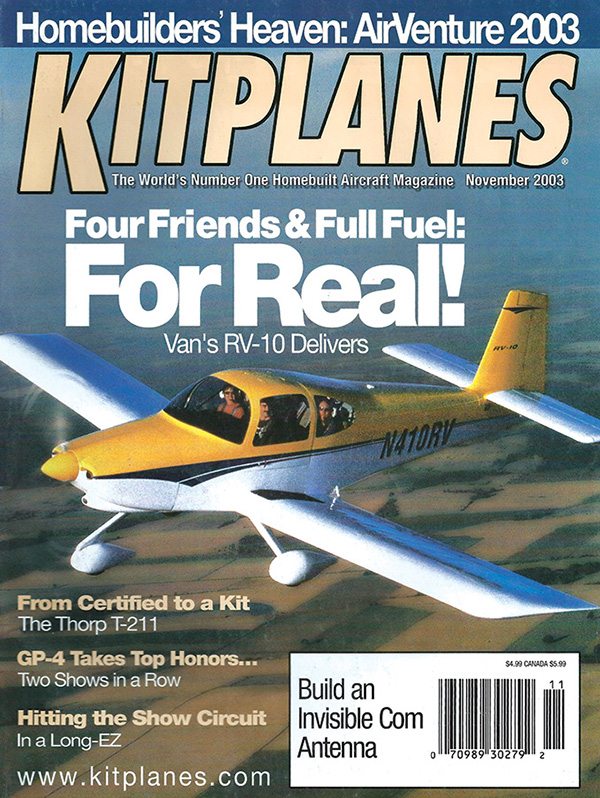
Traveling
For more than a dozen years, I hosted a popular Q&A forum titled “Should I Build an Airplane?” at Florida’s Sun ‘n Fun and the Oshkosh/AirVenture fly-ins. Duane Swing from Velocity Aircraft and Dick VanGrunsven (Van’s Aircraft) often joined the four-person panel. For several years, senior ad director (later publisher) Cindy Pedersen and I put on inexpensive ($15) one-day, hands-on sessions on homebuilding. We started in San Diego and included the East Coast and Canada. Our biggest attendance (700) was near Nashville on a foggy Saturday. The KITPLANES® subscription sales people participated. Newsstand sales of KITPLANES® by the early ’90s were the second-highest of any aviation magazine in the U.S.
We also attended the big indoor aviation show called Aero at Friedrichshafen, Germany. Landing in Munich, we were not far from Gunskirchen, Austria, where all Rotax aviation engines are made. Rotax had advertised in KITPLANES®, but became so concerned about liability in the U.S. that my initial attempts to visit the Gunskirchen plant were refused—until we promised in writing not to mention the visit in the magazine. Rotax has since relaxed its journalist visit policies a bit.
Variety
We tried new things: “Completions” with pictures and brief descriptions from readers, serialized detailed builder reports (some worked; others didn’t), a bit of homebuilt-related poetry, a hangar-construction series, a tongue-in-cheek debate on the theory of lift between Bernoulli and Newton, and even a clever short story (the last two illustrated by cartoonist Robrucha).
Aircraft reviewed included amphibians, airplane-style ultralights (on wheels and floats), jets (BD-10, Maverick, ViperJet), trikes (powered hang gliders), helicopters, gyroplanes, powered parachutes—everything short of a rocket pack. The directories were expanded to include plansbuilt projects, rotorcraft, engines, speed-reduction units, and several other categories. Subscribers now have access to the directories online.
We asked readers to suggest topics, and we took many of them up on their requests. We also encouraged those who wanted to submit articles, even if their writing had never been published. Guidelines and suggestions were provided, along with considerable editorial effort at our end. Quite a few writers got their start here.
The Personal Side
As editor, I made it a point to minimize grabbing the plum projects, instead encouraging the regular and occasional contributors to float an idea our way, get approval, and complete the project, including photos or graphics. There were some stories, though, that I felt obligated to cover.
In July of ’97, Duane Swing planned to fly his company’s four-seat canard retractable Velocity Elite prototype from his factory in Sebastian, Florida, to the Arlington, Washington, airshow. He asked if I would be willing to then fly the Elite from San Diego to EAA Oshkosh, which was three weeks later. That would preclude his Velocity flight to Florida and then to Oshkosh a few weeks later. I agreed. He delivered the Elite to San Diego, checked me out, and flew home by airline.
Late on a Saturday, two days before the planned departure for Oshkosh, I discovered that the display on the single Terra com radio had failed, and that no repair was available locally. The radio worked, but I could not determine its frequency. (Click-counting would not help because the tuning rate was variable.)
Saturday night I managed to reach the Terra sales manager in Albuquerque, and he said that if I could get the airplane there on Monday, Terra would fix the radio.
What to do? The solution was my handheld frequency counter, a piece of amateur radio test gear. KITPLANES® Managing Editor Keith Beveridge came along and helped. The procedure was to key the Terra radio, note its frequency, turn the knob up or down, and keep doing this until arriving on the designated frequency. We even made an instrument departure through the morning stratus with this technique. I told each controller that we would be delayed getting to the new frequency. After departure, we used ATC Flight Following to Albuquerque. The factory fixed the radio. We enjoyed a good Mexican lunch and proceeded to Oshkosh the next day, where we were directed to the airshow arrival pattern.
In 1999, Phil Lockwood asked me along on a multi AirCam trip planned from Sebring, Florida, to a resort on Abaco Island in the Bahamas. The AirCam is the open twin-engine slow plane designed by Lockwood for a National Geographic television special over unlandable African terrain. Damage from a hurricane cancelled the Bahamas trip, so Lockwood and I and another AirCam crew flew instead to Cedar Key, an island at the east end of the Florida panhandle. The scenary and local food were great. The cover story was in the March 2000 issue. Ten years later, Phil and I flew in a five-AirCam group to the original Bahamas destination. I had retired from KITPLANES® by then, but the story was featured on the April 2009 cover.
Wrapping Up
It’s worth considering how many general aviation magazines have passed from the scene since KITPLANES® began. They include Air Progress, Private Pilot, Homebuilt Aircraft and several others. Congratulations are due to the publishing companies with the foresight that led to KITPLANES®’ success: Fancy Publications, Cowles Enthusiast Media, Primedia, and now Belvoir Publications. The scores of contributing writers, editorial staffers, sales people including ad director Chuck Preston, and production people are all due gratitude. The lineup of other editors includes the late Dennis Shattuck, Brian Clark, Marc Cook, Mary Bernard, and now Paul Dye. The tradition continues.
In at the Deep End.
By Marc Cook
I didn’t know it at the time, but during my 12-year tenure at AOPA Pilot magazine I made a decision that would change my life in a positive way. In the mid 1990s, as I watched general aviation stagnate and Experimental aircraft reach new technological heights along with unprecedented popularity, I decided to jump in with both feet. I had already been campaigning for coverage of homebuilt aircraft at the magazine, but now I was ready to build one for myself.

My first airplane was an Aero Designs Pulsar XP. I had only rented aircraft before that, never thinking I could afford to own, and felt that the Pulsar was the right combination of low cost and capability that a staff writer could manage. Many of my AOPA colleagues thought I was nuts, building a “Tupperware” airplane in my garage. Some kept it to themselves, others were outright mocking of my efforts.
Nevertheless, I wrote a series on the build for AOPA Pilot and successfully flew it until my daughter arrived, making us a three-place family with a two-place airplane. That airplane was followed by an early Beech P35 Bonanza, which truly taught me that working-class stiffs have no place owning complex production airplanes.
Soon after Belvoir purchased KITPLANES®, I was approached to work alongside then-editor Brian Clark to bring the magazine more in line with the company’s editorial expectations. Understand that Belvoir produced scrappy little newsletters with high journalistic standards and an attitude. Someone evidently figured I fit that mold and, together with my flying and building experience, was the right man for the job.
I joined the magazine in the fall of 2004 with the February ’05 issue as my first. My last, before handing it off to managing editor Mary Bernard, was the August 2011 issue. Seventy nine issues in all. Each one a minor miracle.
My goals for the magazine were simple. Make it better looking, better written, and more specifically focused on the job of selecting and building your own airplane. Suzanne Stackle came on as our art director very early in my tenure to give this magazine a look and visual sophistication that it maintains to this day under Dan Maher.
I also emphasized hands-on stories and resurrected an age-old tactic of lengthy series covering such topics as metalworking, composites, and individual builds. It was my feeling then, as it is now, that trying to cram a 5000-word story into 2500 words is far less effective than giving the topic three months or more to air out. It was a challenge keeping all those series percolating along, but we succeeded, and I’m proud of the work my staff and extended family of contributors did during that period.
We were actually humming along quite nicely until the economic collapse of 2008, when so many of the small manufacturers (and a few big ones, too) cut back on development and advertising. There were some incredibly lean months after a few years of growth, and it took great courage and fortitude to continue. For a few months, I thought we were on the verge of going dark, but Belvoir management worked hard to cut costs and streamline operations. That KITPLANES® is here today is a testament to those efforts.
One important part of an editor’s job is contributor development, and I’m happy to say I had a good track record here. I continued to look for talented, opinionated, informed and clear-thinking writers during my tenure, and brought such names as Bob Fritz, Bill Repucci, Dave Prizio, Stein Bruch, Dean Sigler, and the current editor, Paul Dye, to the pages of the magazine. I also managed to coerce Omar Filipovic to come and revitalize our digital footprint, which he continues to this day. Finally, I worked to upgrade our photography by using such sharpshooters as Richard VanderMeulen and Kevin Wing.
For a magazine in today’s publishing world to mark its 30th anniversary is something to celebrate. I’m proud to have been a small part of it.
And Now, a Word from our Sponsors…
The advertising side of things.
By Chuck Preston
In 1984 I was looking forward to attending the expedition baseball games at the Los Angeles Summer Olympics. Little did I know that a gentleman named Dennis Shattuck was starting an aviation publication about building your own aircraft—KITPLANES® Magazine. Six years later I went to work with Shattuck and KITPLANES®.

There was no such word as “kitplanes” in any dictionary at that time. Shattuck recognized the potential growth of the market, based on the number of aircraft that were available, and coined the new term. I always smile when people use the term when referring to something other than the magazine.
In 1990 Fancy Publications had just retired AERO magazine, directed towards twin and high performance aircraft owners. Ultralight Planes had been scrapped, leaving KITPLANES® and Private Pilot as the only two aviation publications in the Fancy pool. The publishers did not believe in mixing editorial content, so both publications maintained their own focus. All other Fancy magazines were in the pet industry.
Initially I worked with sister publication, Private Pilot, as an advertising representative. Like most general aviation folks back then, I didn’t think much of the Experimental side of aviation—until I attended my first Oshkosh in July of that year. Prior to that, it was my opinion that Mooney was the only way to fly!
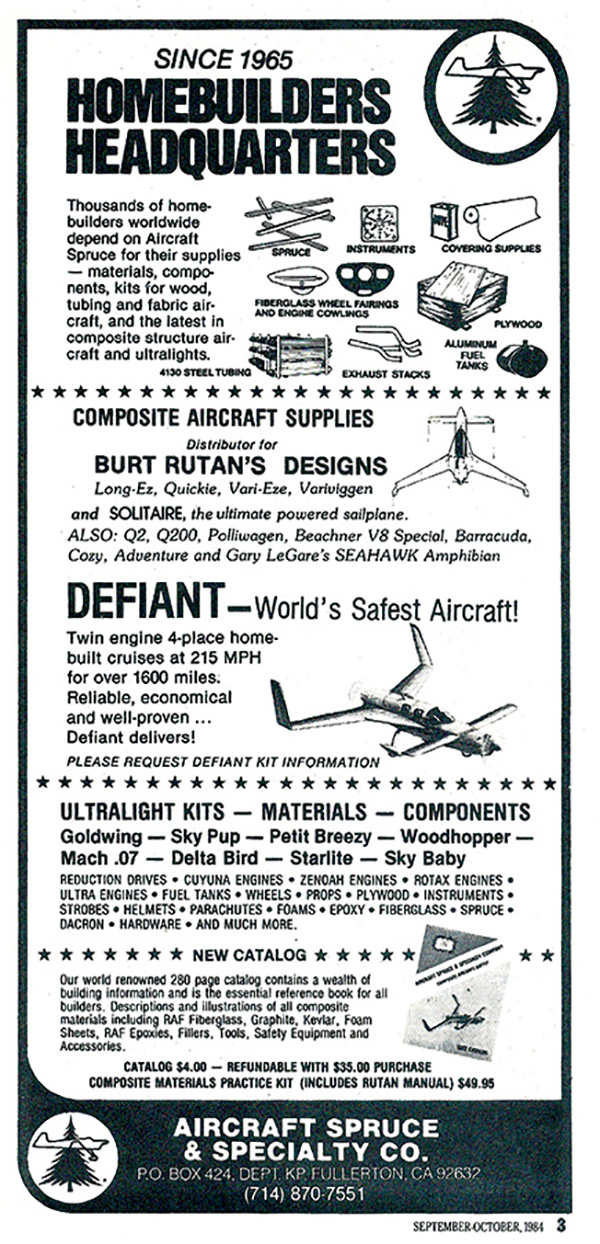
It didn’t take long for that to change. As I walked around the show, I was introduced to Lancairs and Glasairs, high-wing and low-wing aircraft, one-off designs, seaplanes like the Glass Goose, and a number of canards. Oh the choices! But then I saw an airplane that I fell in love with—a Breezy! I bought my set of plans the same year.
Each morning at Oshkosh, editor Dave Martin would gather about three or four of us to walk the flight line. Martin had a plethora of knowledge pertaining to homebuilt aircraft. He had flown most of the types we would see and no question to him went unanswered. I started to see why people were intrigued.
Martin took over the editorial duties in the mid-1980s and continued until his retirement in 2003—the 100th year of powered flight! He loved to fly any type of machine, as long as it appeared to be built properly. His style was to keep flight reviews positive and upbeat. If he flew something that was not quite right, he would discuss his findings with the manufacturer or builder, rather than write a negative story. More than once, this lead to ill feelings that took many years to overcome. Martin always maintained that his customer was the reader.

Oshkosh was full of kit aircraft and they were presented as new and exciting. I remember Jim Metzger of Kitfox hanging brightly-painted aircraft from hoists to attract attention. Today we tend to focus on the Internet to sell our wares.
If you attended any of the airshows in the ’80s or later, you had the privilege of meeting some of our unforgettable booth personalities. Harry and Rita Appell sold KITPLANES® subscriptions for years. Harry, the meticulously dressed hawker, was unforgettable. The Colonel, Glen Appling, kept our booths organized better than any drill sergeant could. Harry and Rita’s daughter Ivy has taken over their duties today and tells me she has had numerous marriage proposals. Anyone who has visited the Belvoir booth at Oshkosh, Sun ‘n Fun, or other fly-ins around the country in recent years has met her. Sorry guys, Ivy is happily married and is the mother of three beautiful children!
In the mid ’90s the corporate world started to invade the homebuilt market. Bean counters started to manage the businesses, and it didn’t take long for the old aviation adage, “How to make a million in aviation? Start with two!” to take hold. KITPLANES® fell into that syndrome. In the mid ’90s we were bought and sold three times before Belvoir Media Group purchased us. The previous corporate folks didn’t know what to make of the Experimental market, but fortunately, we were able to maintain our focus on kit building with little oversight from headquarters. Belvoir Media Group publishes Aviation Consumer, Aviation Safety, Light Plane Maintenance, IFR, and IFR Refresher, so maintaining our heading was never in doubt.
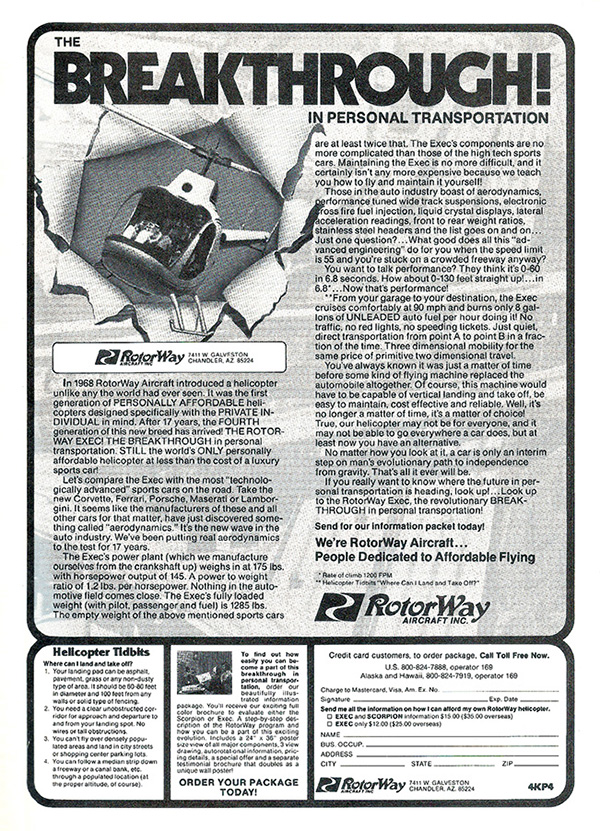
KITPLANES® has always stayed true to the Experimental/homebuilt audience, and we’ve tried to stay on the leading edge. In the early 1990s we started, in conjunction with Aircraft Spruce & Specialty Co., what are now known as the EAA SportAir Workshops. The very first workshop was conducted in San Diego. A number of kit manufacturers showed up, as well as almost 300 attendees. For many, many years, our editors conducted “Should I Build” forums at Oshkosh, Sun ‘n Fun and AOPA Aviation Summit. These were fun and informative events. We invited kit manufacturers to sit on a panel with their peers and sell the concept of building from a kit or plans. We would try to have representatives from wood, metal, composite, and fabric kit companies answer audience questions without promoting their own design—easier said than done!
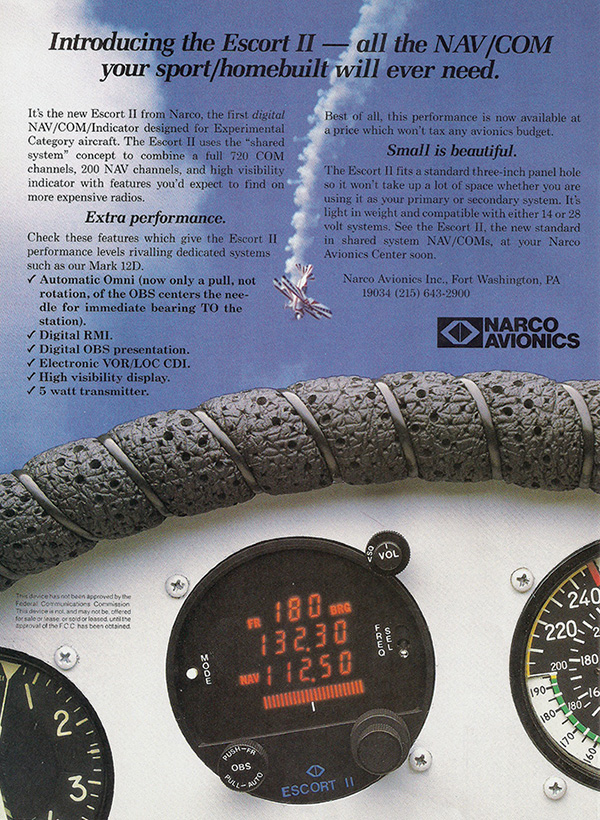 Our longest serving publisher, Cindy Pedersen, conducted extensive research into this market that was used by many aviation companies to formulate marketing strategies. As the industry leader, KITPLANES® is looking to resume that roll. Pedersen spent many days at airshows walking the flight line with corporate executives. Her goal was to show these executives that homebuilders were not just a bunch of crazies but, rather, very sophisticated builders who wanted top-notch equipment in their aircraft. Pedersen is also credited within the community for holding informal get-togethers at aviation events to build a focus on Experimental aviation concerns—sort of a pre-AKIA (Aircraft Kit Industry Association).
Our longest serving publisher, Cindy Pedersen, conducted extensive research into this market that was used by many aviation companies to formulate marketing strategies. As the industry leader, KITPLANES® is looking to resume that roll. Pedersen spent many days at airshows walking the flight line with corporate executives. Her goal was to show these executives that homebuilders were not just a bunch of crazies but, rather, very sophisticated builders who wanted top-notch equipment in their aircraft. Pedersen is also credited within the community for holding informal get-togethers at aviation events to build a focus on Experimental aviation concerns—sort of a pre-AKIA (Aircraft Kit Industry Association).
The Annual Kit Manufacturer directories that were the start of this magazine continue to be a mainstay. Throughout the year they are updated online, and printed in our December, January and February issues. The amount of work that goes into generating these directories is staggering.
KITPLANES® is also a resource for non-aviation inquiries. I receive a number of calls each year from students writing reports on what they feel are odd industries. After most conversations I get the feeling that I’ve just recruited some new blood into our little world. The best calls come from agencies wondering if we can help identify an unusual aircraft that was used in some illicit manner. Most just cannot understand that an aircraft can be built in a basement or garage!
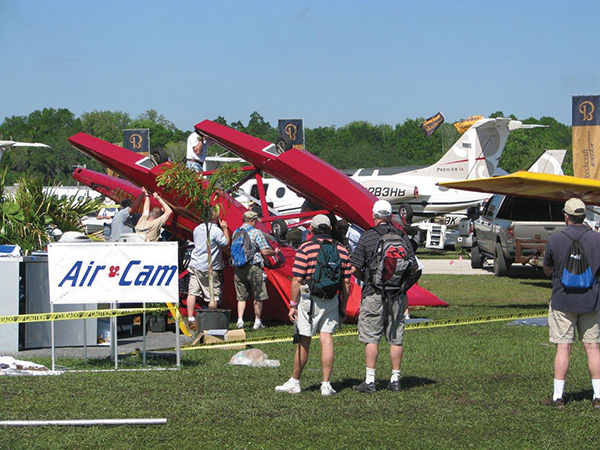
In 2003 Brian Clark took over the editorial reins at KITPLANES®. Clark was the prior managing editor of the magazine and was asked to fill in while the search for a full-time editor was under way. Clark managed the helm with complete professionalism.
When Marc Cook took over as editor in chief, the magazine was ready for some changes. Cook was a young professional with plenty of building, flying, and editorial experience. He brought the magazine into the 21st century with more contemporary ideas and articles. His aviation knowledge, matched with his intellect and humor, made him a much-liked and well-respected authority in the industry.
Cook had a very strong fondness for airplanes, but a real love for motorcycles—there must be something about speed! When he was offered a position at a wingless publication, he jumped at the opportunity.
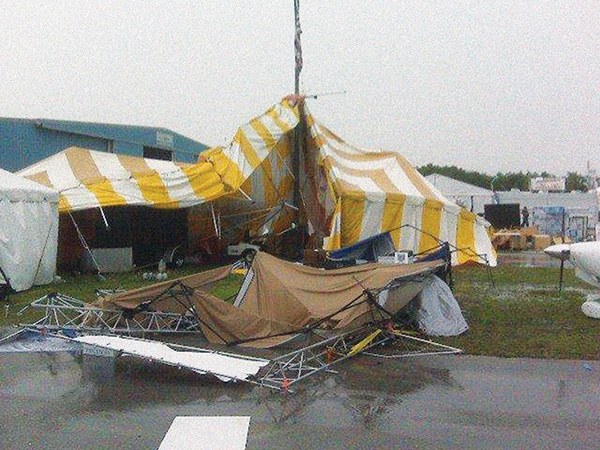
Our long-standing managing editor, Mary Bernard, then became editor in chief. Bernard brought an academic perspective to the magazine. She brought a look into the future of Experimental aircraft and exciting new technologies.
Working in this industry has allowed me some wonderful memories. In the mid-’90s I was at an aviation convention in Orlando. As was customary, I invited one of my clients to dinner, and he asked if he could bring someone along. I assumed it was whoever was working the booth with him that day; Wrong! As my client and his guest approached my table I immediately recognized Gordon Cooper, one of the seven original astronauts. Over the next four hours I came as close as I ever will to space flight.
Then there was the time that the American Propeller folks taught me how to do a Wisconsin line dance; enough said.
Lunch at Sun ‘n Fun in 2011 proved to be a bit more than I wanted. Avemco Insurance Company’s former vice president of marketing and public relations director, Lauretta Godbey, and former graphics and marketing communications specialist, Terry Kasmarzyk, joined me for lunch at the outside pavilion. Within a few minutes it started to rain. Moments later the wind kicked up and the rain went horizontal. About the time I thought the roof was coming off, someone reminded me that Florida buildings are made to withstand a hurricane. It was then that I realized that the damage to aircraft was going to be substantial and I was with two very concerned ladies that worked in the insurance business!
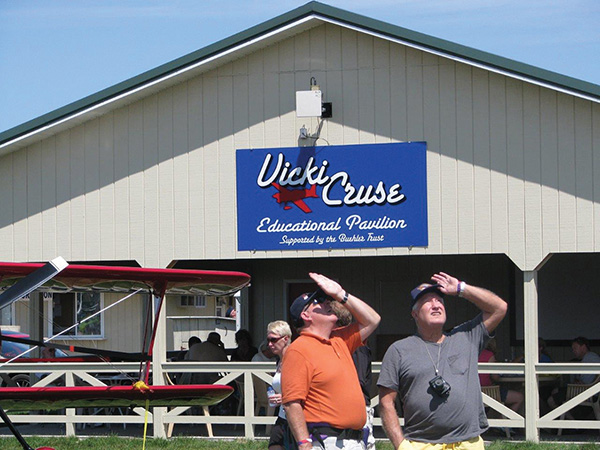
Unfortunately, I’ve lost some good business partners and friends: AirGator founder Amir Tirosh; Genesis designer Chuck Hamilton; Vicki Cruse, president of the International Aerobatic Club (IAC), an Experimental Aircraft Association (EAA) director and board member—and a contributor to this publication; photographer Howard Levy; and Dennis Shattuck. There have been others, too.
There have been many changes to KITPLANES® over the last 30 years, but some things will never change. I know Dennis would be happy to see our focus is still the same. We are about homebuilding and the Experimental market—and always will be.


